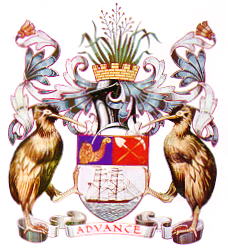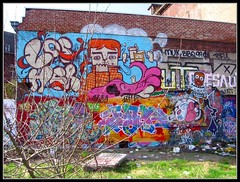| Image via Wikipedia |
| Image via Wikipedia |
| Image by Franco Folini via Flickr |
| Image by epSos.de via Flickr |
| Image by NguyenDai via Flickr |
For many decades tagging has been a problem in NZ cities and towns, but was mainly confined to central and local government buildings and usually didn't affect private dwellings.
But about a generation ago, there was a mindset change probably brought about by a growing lack of empathy for even private property by disaffected and bored youth and young adults towards society, triggered perhaps by the advent of hard drugs such as methamphetamine or P, (and local gang prospects trying to prove a name for themselves), as it is known in NZ, Since then the fences of private homes have become fair game and targets of taggers.
Most city councils have carried out their own dedicated campaigns of action to combat taggers and their graffiti. The general belief is that tags should be painted out within 24 hours before there is much public exposure - most tags have a signature to their style. Here in Lower Hutt city in Wellington there has been a team of painters who patrol the city in their van with their paint equipment, deleting tags as they appear. It is very well organised and keeps new graffiti under reasonable control. They have been sponsored by local companies who have often been targets of taggers themselves.
While they can control tagging of public buildings, it can often be more difficult to control that of private buldings because permission is necessary and owners cannot always be contacted.
I think most councils run similar programs to that of the Hutt City Council in Lower Hutt city. Some years ago the Auckland City Council decided to go a step further and keep a record of graffiti by digitally photographing tags and storing them on a council website. When taggers were arrested evidence was much easier to be gathered by referring to what was stored online. As I mentioned earlier taggers have their own style and signature and evidence is much more forthcoming when a comparison can be made. Some say there is a difference between graffiti and tagging. If it is mural painting I would agree. Some murals underneath bridges look quite artistic and seem to discourage random tagging.
Graffiti costs councils and businesses hundreds of thousands of dollars a year in deletion costs. The Auckland City Council lays charges of wilful damage against any taggers who have been caught painting graffiti.
There is concern at the potential violence that could be metered out against taggers if they are caught, and by taggers themselves if they are caught in the act. A 15 year old boy in Auckland was killed by a property owner who caught him and his accomplice in the act. The man chased the boy and killed him with one blow from his 13 cm knife blade. The man was convicted and sentenced to four years in prison for his actions in 2009. Extenuating circumstances apparently downgraded the charge to manslaughter. But why confront a tagger with a knife in your hand? Why not a broom or a 4x2?
Overseas taggers have been run over or hit by vehicles when tagging by freeway overpasses and one man fell and broke his back when tagging on an overpass itself; he was still clutching his spraycan when rescuers got to him. Other taggers have been shot at, stabbed and attacked members of the public who witnessed their grafitti tagging. The potential for violence is always present. Australian councils have had their own problems and have come up with their own solutions which have often mirrored the NZ experience.









No comments:
Post a Comment